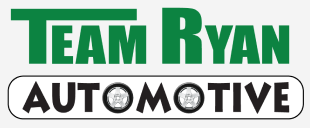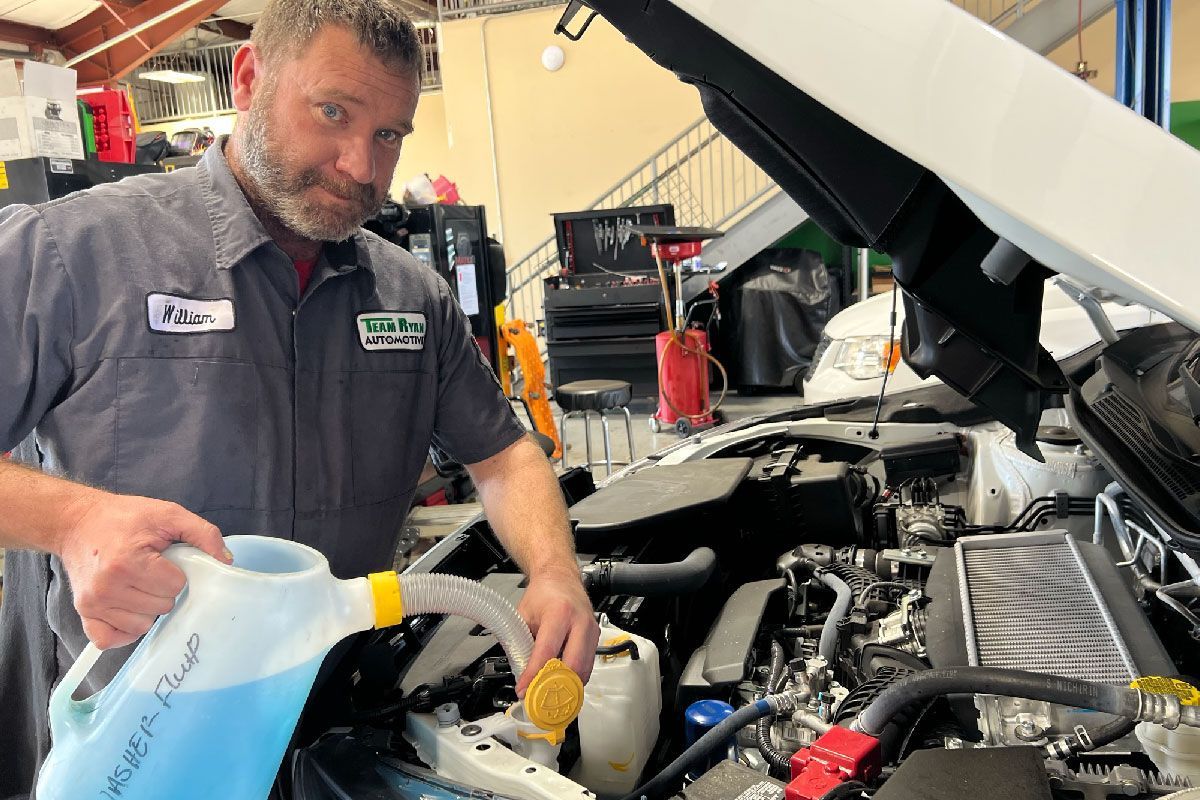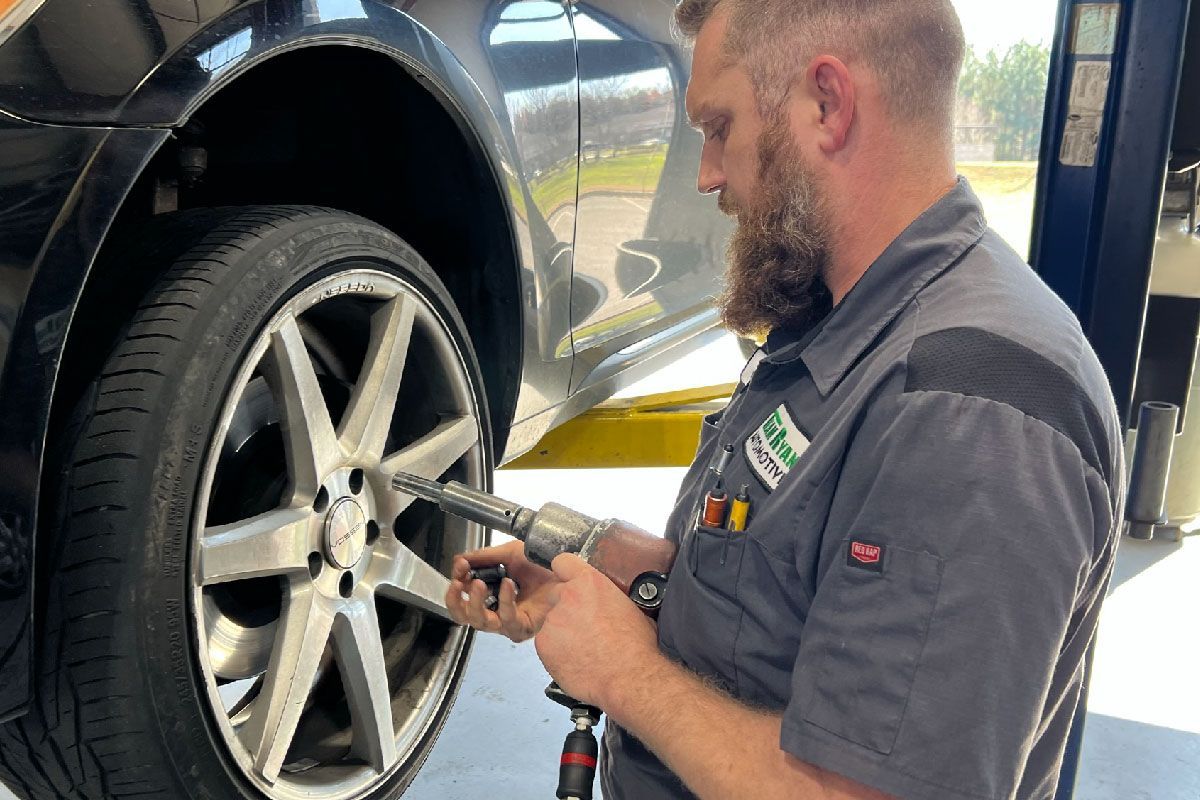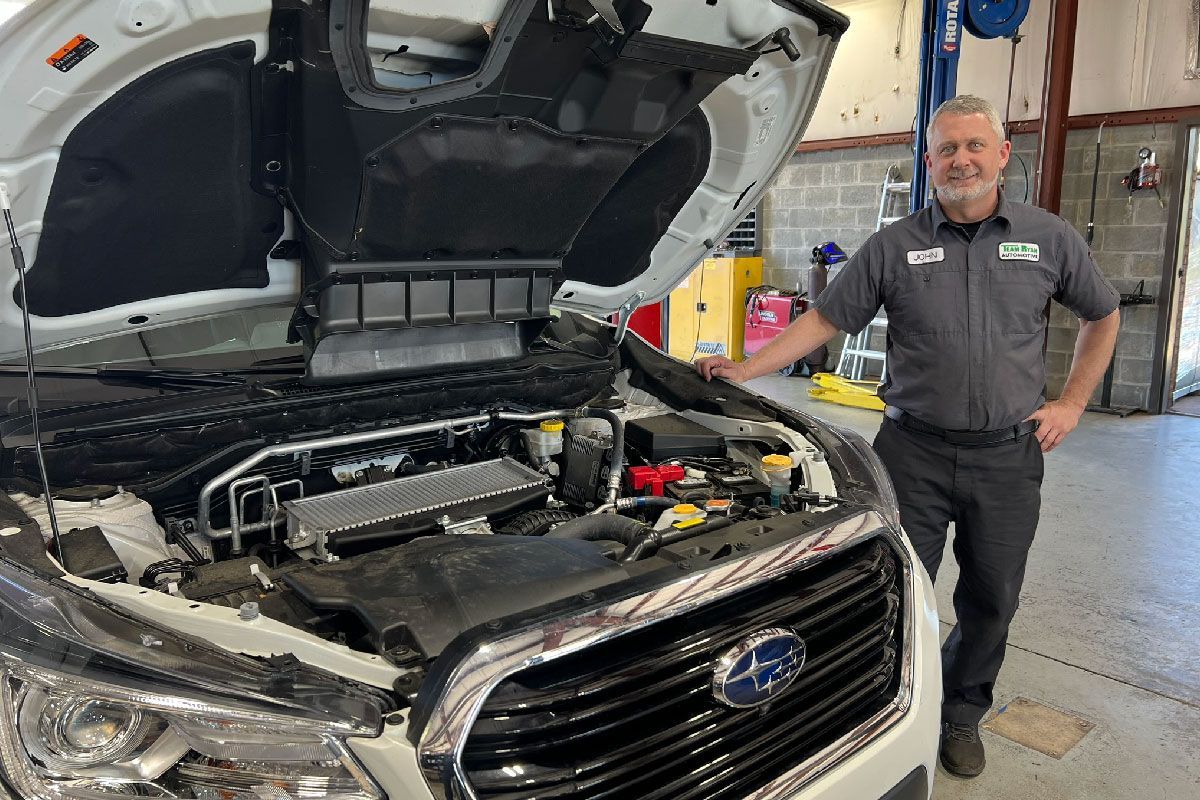Automotive Belt & Hose Replacement Services in Buford and Cumming, GA
Belts & Hoses
A belt or hose failure can cause the engine to overheat, a loss of power steering, and electrical system issues. Although this system is often overlooked, it’s important to stay up-to-date with belt and hose maintenance. Let’s go over the different types of belts and hoses that your vehicle possesses and the importance of keeping up with your vehicle’s belt and hose maintenance.
Jump To: More Details
What Our Customers Are Saying
"Very happy with Team Ryan! The transmission just started slipping and I didn't feel safe driving. We needed to have the company truck back on the road asap. The work was initiated immediately and completed in one day and done with care and professionalism! Thank you for your help and allowing us to be back in business without skipping a beat. Excellent service...Go TEAM!!"
- Viet N.
What Are The Different Types Of Hoses And Belts
There a several different hoses and belts that are essential to your car’s working capabilities:
- Top radiator hose: moves engine coolant to the radiator to reduce the temperature.
- Bottom radiator hose: returns coolants from the radiator to water pump for complete temperature control.
- Bypass hose: carries cooled fluid from the water pump and past the thermostat for a better engine warmup. It also maintains the vehicle’s temperature.
- Heater hose: circulates warmed coolant to and from the cabin’s heating system.
- Singular serpentine belt: powers the alternator, water pump, power-steering, and cooling fans.
- Timing belt: keeps the camshaft and crankshaft in sync.
- Belt tensioner: an assembly used to maintain accessory capabilities by making sure belts are pulled to the correct tension.
What Causes A Belt Or Hose Problems
Overtime, belts and hoses need to be replaced to ensure your vehicle remains in proper working condition.
How To Know If Your Belts Or Hoses Need Maintenance
Your car is rather good at telling you when something is wrong, so let’s go over some signs that your car maybe using to tell you there may be a problem with your belts or hoses:
- Cracking or splitting or a greasy appearance on the belt could indicate a need for a replacement.
- A squealing sound when pressing the gas could indicate that the belt is slipping.
- A sweet burning smell indicates a coolant leak.
- Smoky burning smell indicates a transmission fluid or oil leak.
- Visible smoke or steam from under the hood.
- The “Check Engine” indicator light turns on.
If you notice your car is displaying any of these signs, head over to Team Ryan Automotive, and we will equip you with a proper diagnosis and solution to keep your car’s belts and hoses performing at its best!
Why Are Belts And Hoses Important?
Although belts and hoses are not often thought of as important, they are imperative to the function of your car. Keeping up with their maintenance will protect your vehicle from any costly repairs as well as keeping you safe as you travel.
Our Belts & Hoses Service Includes
Our expert technicians will perform a comprehensive diagnostic to ensure the problems. If a leak or break is found, we will have to replace whatever hose or belt is leaking or broken. Team Ryan Automotive is versed in diagnosing all automotive belts and hose problems, including heater hose, radiator hose, serpentine belt, and timing belt replacement.
Description Of Belts & Hoses
Your vehicle’s belts and hoses play a big part in the processes within the engine, charging system, air conditioning system, and cooling system. These belts and hoses play crucial roles in functional operations inside your vehicle. The heater hose and radiator hose carry liquid coolant to and from the engine, radiator, and heater core. The timing belt is responsible for maintaining engine precision by synchronizing the rotation of the crankshaft and camshaft, which move the engine’s valves and pistons. However, not all vehicles contain timing belts. In place of timing belts, some vehicles use timing chains. On the outside of the engine, the serpentine belt transmits power from the front of the engine to other systems in the vehicle, like the air conditioning system and charging system. Some factors that contribute to wear and tear on your belts and hoses include vehicle age, mileage, belt tension, hose clamp failure, electrochemical degradation (electrolysis), and oil contamination. In the long run, routine maintenance and replacements of your vehicle’s belts and hoses will prevent breakdowns and costly repairs.
Benefits Of Belts & Hoses
When compared to other metal or plastic components in your vehicle, rubber hoses and belts have one of the shortest life spans. These items are constantly exposed to engine heat, vehicle vibrations, and harmful chemicals, which all have the potential to cause cracks and leaks. Some symptoms to be aware of for belts and hoses nearing failure include squeaking, screeching, or grinding noises that begin when starting your engine or appear during vehicle operation. It's worth noting that grinding sounds near belts are usually associated with a bad pulley bearing rather than the belt itself, as the pulley bearing may freeze up and ultimately lead to a belt replacement. Other symptoms of a bad belt or hose include loss of power, leaking coolant or other fluids, illuminated dashboard lights, rising steam from the engine, and air conditioning failure. While routine maintenance of belts and hoses is always important, summertime is an especially important season to keep an eye under the hood due to increased temperatures, which will accelerate deterioration of the rubber components. Since belts and hoses can be difficult to inspect visually, be sure to follow your manufacturer’s recommendations for scheduled maintenance.
Heater Hose Replacement
Heater hoses play a crucial role in a vehicle’s heating system, which operates in conjunction with the cooling system.
Radiator Hose Replacement
Your car or truck’s radiator hoses, which connect the engine to the radiator, are important components that maintain.
Serpentine Belt Replacement
As the timing belt synchronizes engine processes, the serpentine belt powers peripheral processes in the engine compartment.
Timing Belt Replacement
The timing belt, or timing chain in some vehicles, is a drive belt that synchronizes the rotation of the engine’s.
Belts & Hoses FAQ
Why Are Belts And Hoses Important In A Car?
Hoses work together with the belts to ensure your vehicle is working properly and efficiently. They also ensure the proper operating temperature is maintained.
How Long Do Belts And Hoses Last?
It does depend on the belt or hose, but they typically last a few years. It is recommended to have them checked whenever your vehicle is being serviced to ensure they are all in working condition.
How Many Belts Does A Car Engine Have?
A vehicle has exactly two belts in the engine.
What Are The Two Belts In A Car?
There is a timing belt and serpentine belt in each vehicle.












